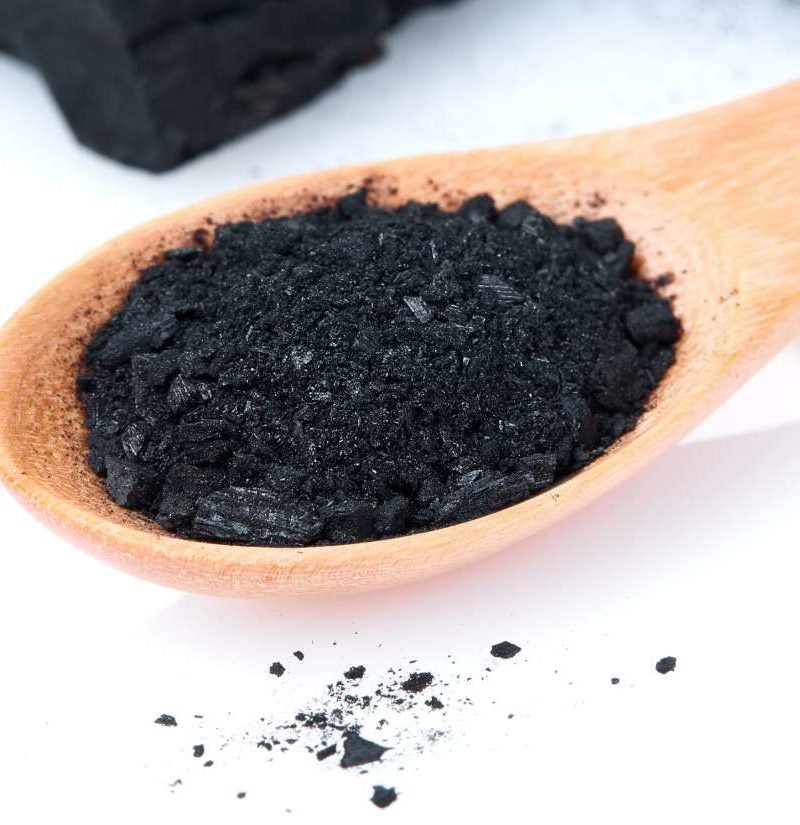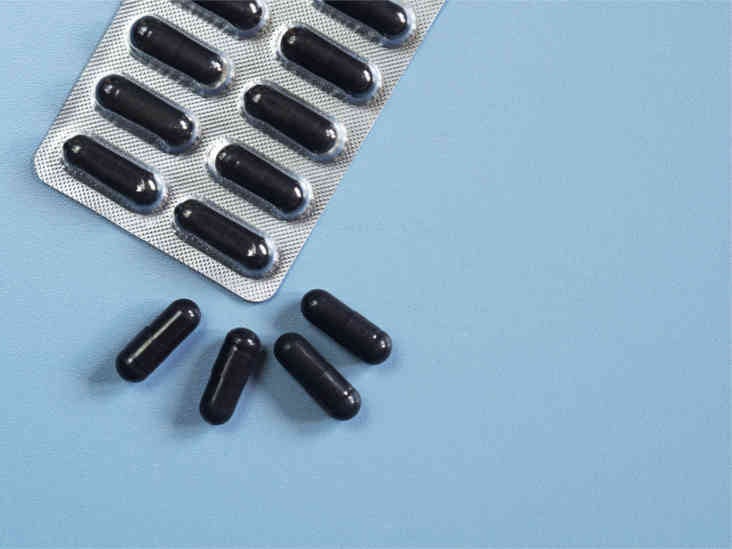Medically reviewed by Alan Carter, Pharm.D. — Written by Jennifer Huizen on January 10, 2020
Activated charcoal is a fine, odorless, black powder often used in emergency rooms to treat overdoses. Its toxin-absorbing properties have a wide range of medicinal and cosmetic uses, though none are scientifically proven.
Superheating natural sources of carbon, such as wood, produces activated charcoal. The black powder stops toxins from being absorbed in the stomach by binding to them. The body is unable to absorb charcoal, and so the toxins that bind to the charcoal leave the body in the feces.
This article will discuss some of the ways people use activated charcoal, its potential benefits, and if there are any risks.
What is activated charcoal?
Activated charcoal is available in different forms, including powder.
Activated charcoal is not the same substance as that found in charcoal bricks or burnt pieces of food.
The manufacture of activated charcoal makes it extremely adsorbent, allowing it to bind to molecules, ions, or atoms. In this way, it removes these from dissolved substances.
Making activated charcoal involves heating carbon-rich materials, such as wood, peat, coconut shells, or sawdust, to very high temperatures.
This ‘activation’ process strips the charcoal of previously absorbed molecules and frees up bonding sites again. This process also reduces the size of the pores in the charcoal and makes more holes in each molecule, therefore, increasing its overall surface area.
As a result, one teaspoon full of activated charcoal has more surface area than a football field.
Possible uses of activated charcoal
Authorities have only approved activated charcoal for the emergency treatment of overdoses or poisonings.
But due to its powerful toxin-clearing properties, some advocates have proposed activated charcoal as a treatment for an ever-growing list of conditions.
There is not sufficiently conclusive, large-scale research to establish what the benefits are of activated charcoal. Many over-the-counter (OTC) products also rely on the basic chemical principles of activated charcoal to defend their benefit claims.
A few of the uses of activated charcoal with some evidence include the following:
1. Kidney health
Activated charcoal may be able to assist kidney function by filtering out undigested toxins and drugs.
Activated charcoal seems to be especially effective at removing toxins derived from urea, the main byproduct of protein digestion.
More research is needed, but some animal studies show that activated charcoal may help improve kidney function and reduce gastrointestinal damage and inflammation in those with chronic kidney disease.
A 2014 study saw rats with induced, chronic kidney disease given 4 grams (g) per kilogram per day of an oral activated charcoal preparation. The researchers found that the animals had significant reductions in intestinal inflammation and damage.
In another 2014 study, rats with induced chronic renal failure were fed mixtures containing 20 percent activated charcoal, and they also experienced improved kidney function, and a reduced rate of kidney inflammation and damage.
2. Intestinal gas
Activated charcoal powder is thought to be able to disrupt intestinal gas, although researchers still do not understand how.
Liquids and gases trapped in the intestine can easily pass through the millions of tiny holes in activated charcoal, and this process may neutralize them.
In a 2012 study, a small sample of people with a history of excessive gas in their intestines took 448 milligrams (mg) of activated charcoal three times a day for 2 days before having intestinal ultrasound examinations. They also took another 672 mg on the morning of the exam.
The study showed that medical examiners were better able to see certain parts of some of the organs they intended to identify with the ultrasound whereas intestinal gas would have obscured these before the treatment.
Also, some 34 percent of the participants who were given the activated charcoal to reduce their gas had improved symptoms.
In a 2017 study, people who took 45 mg of simethicone and 140 mg of activated charcoal three times daily for 10 days, all reported a significant reduction in abdominal pain with no side effects.
The research is still limited, but a panel of the European Food Safety Authority (EFSA) reports that there is enough evidence to support the use of activated charcoal to reduce excessive gas accumulation.
There is no set way to use activated charcoal for intestinal gas, but the EFSA recommend taking at least 1 g at 30 minutes before and after each meal.











